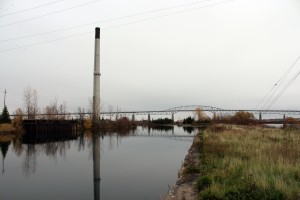The Re:POST Symposium is scheduled for Tuesday, March 17, 2015 beginning at 1:00 pm and asks, how does academic design and research disseminate into ongoing professional exploration? Over the course of the afternoon, three panels will explore, through presentations and discussions, opportunities regarding post-thesis development beyond the date of defence. The presenters and respondents come from diverse backgrounds and have transitioned from thesis research into various forms of practice. This week, we’ll be introducing the practitioners contributing to this year’s Re:POST Symposium.
Reminder: graduates students, don’t forget to sign up to present your work to this panel during the workshop portion of the symposium.
Panel 3 partners Jonathan Enns, founder of Office Enns and SolidWorks, respondent Andrea Ling of GUILD. Each practitioner explores the intersection of design with fabrication, material properties, formal conditions, and digital technologies.
Presenter: Jonathan Enns
Thesis: Jonathan earned his Bachelor of Applied Science at the University of Waterloo and proceeded to earn his Master of Architecture from Princeton University, where he received the Butler Traveling Fellowship, AIA Henry Adams Medal, and the Suzanne Kolarik Underwood prize for design. His thesis proposed a new vision for architectural geometry derived from the digital integration of engineered and naturally occurring structures. Trees manipulated by a CNC machine were used as the structure of a building. Rather than preserving the idealized form of the trees, various types of trees were combined in the composition of fabricated posts that work uniquely in compression. This project has been published in Architectural Design [AD] and was awarded an Archiprix International Hunter Douglas Award in 2011.
Practice: Jonathan is a designer whose current work investigates how design systems can be used to understand, manipulate, and intelligently introduce foreign elements into design geometry, be these found objects, economic/manufacturing pro formas, or formal types. This interest in the balance between geometric, cultural, and technical constraints led him to practice at the consulting company Front Inc. in NYC, where he developed facades for Ateliers Jean Nouvel, Bjarke Ingels Group, and Buro Ole Scheeren, among others. His independent work has continued the project of part-based, detail-oriented design started in his thesis. In 2014, he was awarded a Holcim Award for Sustainable Construction for his investigation into timber housing systems. He teaches architecture at the University of Toronto and runs a design company called SolidOperations.
enns.co and www.s-o.ca
Respondent: Andrea Ling
Thesis: Andrea completed her Master of Architecture at the University of Waterloo with a background in human physiology from the University of Alberta. Her thesis project “The Girl in the Wood Frock,” which earned an OAA Award of Excellence, exists in the space between clothing and architecture, made by techniques that mix tailoring with building. It was part of the “Fashion No-No” exhibition at the Harbourfront Centre and solo exhibitions at Index G Galleries (Toronto) and Design at Riverside Gallery (Cambridge). Material storytelling is a theme in her thesis project that has permeated into much of Andrea’s work. She is interested in how meaning is embodied in objects through the choice of technique and material as much as it is by form. Textiles, fibre arts, and the fusion of traditional hand-craft with modern fabrication technologies remain strong in her interests.
Practice: Andrea worked at Kongats Architects on numerous public building projects, including the University of Toronto Mississauga’s Terrence Donnelly Health Centre, Centennial College’s Athletic and Wellness Centre, and Nipissing University’s Student Centre. After obtaining her license, she transitioned back into installation art by working as a project lead and designer at Philip Beesley Architect, specializing in large-scale kinetic installations exhibited internationally. She co-founded GUILD, an art and design collective that creates public art. Their project “Through the Gorilla Glass” was exhibited at Scotiabank Nuit Blanche in 2011; they are now working on a series of permanent outdoor pieces for various public clients. Andrea has lectured in Toronto, Cambridge, New York, and Shanghai. She currently works as an artist in Toronto and as an architect for the University of Toronto.


